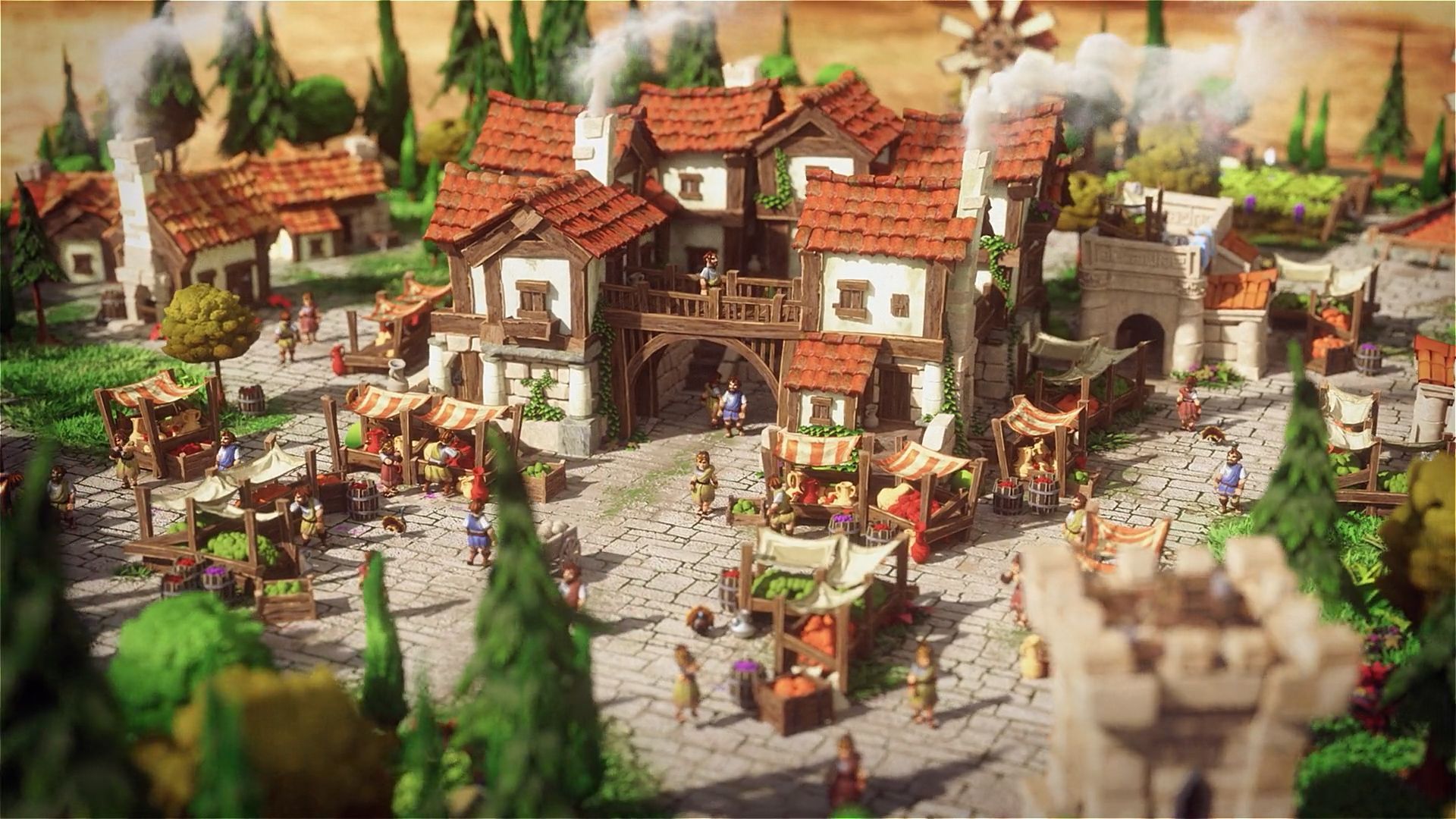How to Grow as a VFX artist
Whether you’re an aspiring artist or a Houdini hotshot, read here for senior VFX artist Wirginia Romanowska’s advice on how to level up your career.
The header image used for this article was provided by Ge.View here
Visual effects, or VFX, is a lucrative sector of the games and CGI industry. Specialists combine art, math and animation for some stunning results, which can be used to amplify powerful punches, add a magical twinkle to an environment, or pack groundbreaking explosions with smoke, sparks and fire.
However, navigating this challenging discipline can be difficult. Punishing software, painfully long rendering timescales and looming deadlines make it hard for many VFX artists to know where to start. However, don’t fret.
In a talk with GDC, senior VFX artist Wirginia Romanowska, known for stunning visual effects on games such as Doom Eternal and Watch Dogs, shared her advice on how to sustainably scale your creativity, skillset and career. Her tips prioritize enjoyment and mental well-being to encourage success, which in our opinion, makes them some of the most valuable tips out there.
Manage burnout
Use a Pomodoro timer, and take breaks. Working in the entertainment industry is meant to be just that - entertaining. Don’t burn yourself out, and prioritize your enjoyment, fun and creativity.
Learn new programs
Challenge yourself to learn new software. Whilst Blender, Maya, and 3DSMax are the mainstream choices for VFX, the challenging but immensely rewarding Houdini will push your skills, and result in paralleled success in your career. Although infamously punishing, Weronika can’t stress the benefits to be reaped from picking up Houdini.
Use tutorials to learn how to learn. Practical, step-by-step instructions on how to create practical effects are the best way to learn. As your knowledge grows, you’ll eventually come to be able to blend concepts and apply your new-found skills practically. These quick VFX sketches will eventually become applicable to job adverts, which you can promote in your portfolio.
The easiest-to-follow tutorials that don’t eat up several hours of an evening are those made byEntagma,Steven KnippingandJohnny Farmfield.

VFX and 3D game artistEugenewas responsible for the VFX, lighting and shading for the mobile gameDomiNations.
Idea Generation
Keep a list of ideas. ArtStation, Instagram and Pinterest are great sites to reap inspiration from, as well as dreams, films, games and television shows with inspirational elements. Use your imagination, and channel storytelling into your practice VFX pieces: a flower blooming, a bee growing, an exploding mushroom - small-scale ideas that can quickly blossom into fully-fledged short stories.
Use free assets
Creating 3D props can be time-consuming and taxing, especially if you don’t have any prior expertise in the field. Weronika recommends using sites such as threedscans, CGTrader, Quixel and the Unity store for free-to-use assets. These are great for quickly creating visuals to show off your VFX skills. If you need something specific, why not team up with an artist? CGHero’s army of 3D artists can quickly create totally custom bespoke assets on demand.
Work in short sprints
To transform your budding ideas into realtime concepts, work quickly.
To begin, Wirginia recommends creating a quick digital sketch of your concept. Use this to discern whether your idea has spark: Does it inspire you, does it make sense? If so, pursue it! If not, move on to the next idea. This approach means you won’t get stuck on difficult or boring tasks and instead encourages you to keep creating exciting and visually stunning work.

SciFi skull, made in Houdini by Nathan.
If you’ve been pursuing an idea for a while but have begun to find the process frustrating, move on. Find another idea that can be rapidly made and keep the momentum going. This will hone your technical skills and artistic quality, so you can come back to the challenging projects after some self-investment and improvement.
When working on personal projects, it can be tricky when to call it quits. Use this short checklist to maintain creative momentum.
- Complete one project a month.
- Only fix the most obvious issues, and address ten as a maximum.
- Overcome complicated and tricky shots by rendering something simple instead: render these complex shots overnight instead.
- Have patience, and trust yourself.
Share your work
Sharing work can be scary - especially for us notoriously perfectionistic CGI and VFX artists. However, feedback accelerates your learning experience. Opinions, critiques, and suggestions from fellow Houdini heads and particle-effect lovers will only benefit you in the long run.
Perfection is the enemy of completion. Therefore, stick to short projects for your personal development, and always focus on the journey rather than the destination. Traditional artist and illustrator Meg Black quotes, “a work of art is not complete until it is shared”.
Document your learning process
Play with equations, mess around with programs, and see what you can do. Record your processes, and use them as a resource when you cross the same issue again. GitHub is a great tool for this, as your progress can be neatly and visually documented for quick reference and navigation.

A dimensional portal, created in Unreal Engine by professional VFX artist Vitaly.
Recognise your progress
As you learn more about VFX, you will be capable of using more programs, you'll find yourself qualified for more job roles and your creative freedom will become nearly unlimited. Houdini fluency naturally branches into other areas, where you can create some truly beautiful things: you can use these skills in software like SpeedTree, RedShift, the Substance Suite, GitHub and Nuclino.
Soft skills derived from VFX knowledge will improve your critical thinking, and problem-solving abilities, too. Using logic and scripting will engage your mathematical brain, which will manifest in a rapid ability to create stunning visualizations.
Look after Number One
The most important part of growing as an artist in any discipline is to stay proud of your achievements, skills, and progress. VFX is hard. Math and equations, mind-bending logic, confusing syntaxes, and a good eye for art are just a few of the skills required to truly harness the world of VFX. With a healthy balance of work, life, and learning, your progress will skyrocket.
After all, the most crucial part of your career is you. So, always give yourself credit, and be proud of yourself!
Begin your freelance VFX career with CGHero today.
Have a CG Project?
Looking for assistance with your next project? Post your project and receive quotes from our Heroes.
Post Your Project